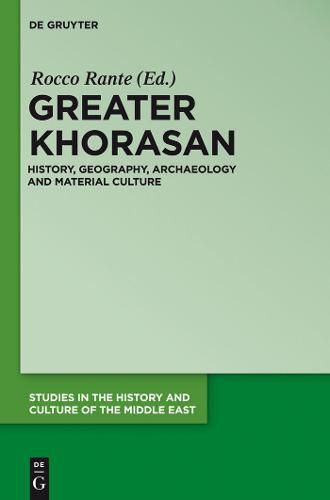Readings Newsletter
Become a Readings Member to make your shopping experience even easier.
Sign in or sign up for free!
You’re not far away from qualifying for FREE standard shipping within Australia
You’ve qualified for FREE standard shipping within Australia
The cart is loading…






This title is printed to order. This book may have been self-published. If so, we cannot guarantee the quality of the content. In the main most books will have gone through the editing process however some may not. We therefore suggest that you be aware of this before ordering this book. If in doubt check either the author or publisher’s details as we are unable to accept any returns unless they are faulty. Please contact us if you have any questions.
The modern sense of Greater Khorasan today corresponds to a territory which not only comprises the region in the east of Iran but also, beyond Iranian frontiers, a part of Afghanistan and Turkmenistan. In the past this entity was simply defined as Khorasan.
In the Sassanidera Khorasan defined the Eastern lands . In the Islamic era this term was again taken up in the same sense it previously enjoyed. The Arab sources of the first centuries all mention the eastern regions under the same toponym, Khorasan.
Khorasan was the gateway used by Alexander the Great to go into Bactria and India and, inversely, that through which the Seljuks and Mongols entered Iran. In a diachronic context Khorasan was a transit zone, a passage, a crossroads, which, above all in the medieval period, saw the creation of different commercial routes leading to the north, towards India, to the west and into China.
In this framework, archaeological researches will be the guiding principle which will help us to take stock of a material culture which, as its history, is very diversified. They also offer valuable elements on commercial links between the principal towns of Khorasan. This book will provide the opportunity to better know the most recent elements of the principal constitutive sites of this geographical and political entity.
$9.00 standard shipping within Australia
FREE standard shipping within Australia for orders over $100.00
Express & International shipping calculated at checkout
This title is printed to order. This book may have been self-published. If so, we cannot guarantee the quality of the content. In the main most books will have gone through the editing process however some may not. We therefore suggest that you be aware of this before ordering this book. If in doubt check either the author or publisher’s details as we are unable to accept any returns unless they are faulty. Please contact us if you have any questions.
The modern sense of Greater Khorasan today corresponds to a territory which not only comprises the region in the east of Iran but also, beyond Iranian frontiers, a part of Afghanistan and Turkmenistan. In the past this entity was simply defined as Khorasan.
In the Sassanidera Khorasan defined the Eastern lands . In the Islamic era this term was again taken up in the same sense it previously enjoyed. The Arab sources of the first centuries all mention the eastern regions under the same toponym, Khorasan.
Khorasan was the gateway used by Alexander the Great to go into Bactria and India and, inversely, that through which the Seljuks and Mongols entered Iran. In a diachronic context Khorasan was a transit zone, a passage, a crossroads, which, above all in the medieval period, saw the creation of different commercial routes leading to the north, towards India, to the west and into China.
In this framework, archaeological researches will be the guiding principle which will help us to take stock of a material culture which, as its history, is very diversified. They also offer valuable elements on commercial links between the principal towns of Khorasan. This book will provide the opportunity to better know the most recent elements of the principal constitutive sites of this geographical and political entity.